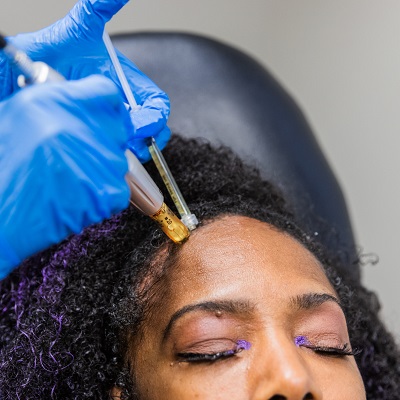Introduction
Platelet-Rich Plasma (PRP) therapy has become an increasingly popular option for hair restoration in recent years. It involves using components of a patient’s own blood to stimulate hair growth and improve hair density. Despite its growing acceptance, PRP hair treatment is still surrounded by various myths and misconceptions that can cloud judgment and lead to misinformation. This article aims to clarify these myths, providing a comprehensive overview of what PRP Hair Treatment truly entails and helping prospective patients make informed decisions about their hair restoration options.
Myth 1: PRP Hair Treatment Is a New and Unproven Technique
Understanding PRP Therapy
PRP therapy is not a new concept; it has been used in various medical fields for decades. Originally developed in the 1970s, it gained prominence in the field of orthopedics and later in dermatology. The process involves drawing a small amount of blood from the patient, centrifuging it to concentrate the platelets, and then injecting the platelet-rich plasma into the scalp. This technique leverages the body’s natural healing processes to promote hair growth.
Proven Efficacy
Multiple studies and clinical trials have demonstrated the efficacy of PRP therapy in treating hair loss. Research published in reputable medical journals shows that PRP can improve hair density and thickness in patients with androgenetic alopecia and other forms of hair loss. While individual results may vary, the procedure has a solid foundation of clinical evidence supporting its benefits.
Myth 2: PRP Hair Treatment Works for Everyone
Individual Variability
While PRP therapy is effective for many people, it does not guarantee results for everyone. The success of PRP hair treatment can depend on various factors, including the underlying cause of hair loss, the patient’s overall health, and the stage of hair loss. For individuals with more advanced hair loss or specific conditions, PRP may not be as effective. A thorough consultation with a qualified specialist is crucial to determine whether PRP is a suitable option.
Complementary Treatments
In some cases, PRP therapy is used in conjunction with other treatments, such as minoxidil, finasteride, or hair transplant surgery, to enhance overall outcomes. A tailored approach that combines different therapies may be necessary for optimal results.
Myth 3: PRP Hair Treatment Is Painful and Requires Extensive Downtime
Procedure Sensations
The discomfort associated with PRP therapy is generally minimal. The procedure involves injections into the scalp, which can cause mild discomfort but is usually well-tolerated by most patients. Local anesthetic can be used to minimize pain during the treatment.
Recovery and Downtime
PRP therapy typically requires minimal downtime. Most patients can resume their normal activities immediately after the procedure. Any post-treatment symptoms, such as mild redness or swelling, usually subside within a few hours to a day. This makes PRP an attractive option for individuals seeking a minimally invasive treatment with a quick recovery period.
Myth 4: PRP Hair Treatment Offers Instant Results
Realistic Expectations
PRP therapy does not provide instant results. Hair growth is a gradual process, and noticeable improvements usually become evident after several months. On average, patients may start to see results within 3 to 6 months following the initial treatment, with optimal results often appearing after a year. Patience and realistic expectations are essential for anyone considering PRP therapy.
Ongoing Maintenance
To maintain the benefits of PRP therapy, ongoing treatments may be necessary. Many patients undergo a series of sessions initially, followed by periodic maintenance treatments to sustain hair growth and prevent further hair loss.
Myth 5: PRP Hair Treatment Is a Cure-All for Hair Loss
Addressing Limitations
While PRP therapy is effective for many, it is not a cure-all for all types of hair loss. It works best for individuals with early to moderate hair thinning and can be less effective for those with advanced baldness or complete hair loss. Additionally, PRP therapy does not address underlying health conditions that may contribute to hair loss, such as hormonal imbalances or nutritional deficiencies.
Personalized Treatment Plans
A comprehensive approach to hair restoration involves assessing the root cause of hair loss and exploring all available treatment options. PRP therapy is just one component of a broader strategy that may include lifestyle changes, medications, or surgical interventions.
Conclusion
PRP hair treatment represents a promising option for individuals seeking to address hair loss, but it is important to dispel common myths and misconceptions surrounding the procedure. By understanding the true nature of PRP therapy, its limitations, and realistic outcomes, prospective patients can make more informed decisions about their hair restoration journey. Consulting with a qualified specialist can provide personalized insights and help determine the most effective treatment plan tailored to individual needs. With accurate information and realistic expectations, patients can navigate the path to hair restoration with confidence and clarity.





Comments